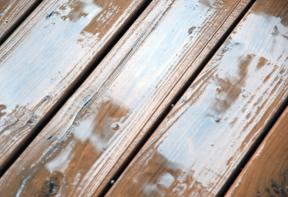Checking wood moisture
Steve Maxwell gives us the lowdown on effectively drying wood
Working with improperly dried wood is like falling into a pit. By the time your plight is obvious, it’s too late-assembled parts warp, glue joints crack and a rising sense of panic takes hold. I know because I’ve felt it. I also know it doesn’t have to be this way. Learning about the wily ways of wood can keep you one step ahead of trouble, while letting you enjoy success when using all kinds of inexpensive and interesting lumber that might otherwise cause you grief.
Wood is a moisture sponge-it slowly loses or absorbs moisture from its surroundings. When a piece of wood is in balance with the water in the air around it, the wood is said to have reached equilibrium moisture content (EMC). Whether it’s kiln-dried or air-dried, it’s all the same. Wood stored in a damp place gets wetter and bigger; low-moisture air makes wood drier and smaller. The trick is ensuring that your wood has a moisture content (and size) in balance with the driest interior environment your completed project is likely to face. Getting to that stage depends on where you start.
Wood is at its wettest as it comes from the sawmill, with a moisture content that can be higher than 30 per cent. If you plan to air-dry your own lumber (which is my preference), you’ll need to stack it in a location with at least a little breeze to prevent mould growth and you also need spacers between each layer of wood. A shady outdoor spot is good, and so is an airy shed or hayloft. A garage probably doesn’t have enough airflow, and a basement certainly doesn’t. This is Phase 1 drying, and it will bring wood moisture content down to about 16 per cent or 12 per cent at the most, depending on the climate in your part of Canada. Just be careful: wood feels ready to use after Phase 1 drying is complete, but it’s not nearly dry enough to prevent trouble.
In most regions of the country, wood needs to have a 7 per cent to 9 per cent moisture content to prevent projects from warping and cracking during the driest part of the heating season. Thus, a second drying phase is required, and skipping this step is where most moisture-related trouble starts.
You can store lumber in a barn, unheated garage or shed for a hundred years, and it will never get dry enough for indoor projects. To achieve this low level of moisture, you need a little heat, air and time. How much of these elements depend on the thickness of the wood, how wet it is and the temperature and humidity of your heated, indoor space.
Winter is a great time to dry wood because Canadian homes and heated workshops are ideal Phase 2 drying spaces. And the process doesn’t take long if you apply the following three tricks.
Jump to a section
- Page 1 : Checking wood moisture
- Page 2 : Detailed illustration
To leave a comment, please log in












No comments